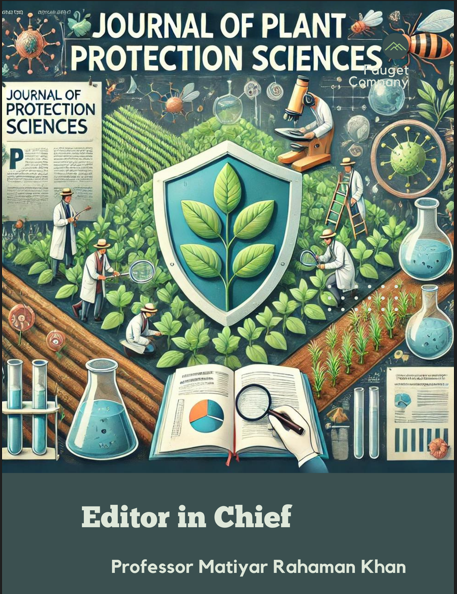Past, present and future of nematophagous fungi as bio agent to control plant parasitic nematodes
DOI:
https://doi.org/10.48165/Keywords:
Nematophagous fungi (NF), mechanism of trapping nematodes, antagonism, opportunistic fungiAbstract
Nematophagous fungi (NF) are the major antagonists of nematodes. They include nematode trapping fungi as well as endoparasitic fungi. For more than a century scientists are studying different facets of biology of NF including their potential as a bioagents to control nematodes. Their inconsistent success in control of nematodes in field tri als, however, is enigmatic. This paper takes a review of the researches done by various workers on the diversity, morphology ecology, physiology of nutrition, trap formation and mechanism of nematode capture as well as prob able causes of death. The review traces the shift in the areas of research as well as ups and downs in the interest shown by the researchers. Guide lines for organized, coordinated research to i) screen different strains of NF that are tolerant to antagonism by other fungi, and ii) develop a bioagent based on nematophagous fungi which will show consistent success for the controlling of phytonematodes are also suggested.
References
Aschner M Kohn S. 1958 The Biology of Harpospo rium anguillulae. Journal of General Microbi ology 19:182-89.
Barron GL. 1969 Isolation and maintenance of endoparasitic nematophagous hyphomycetes. Canadian Journal of Botany 47:1899-02.
Black-Burn F Hayes WA. 1966 Studies on the nutrition of Arthrobotrys oligospora Fres and A. ro busta Dudd. I - Saprophytic phase. Annals of Applied Biology 58:43-50
Bricklebank J Cooke RC. 1969 Utilization of polysac charides by two nematode parasitic fungi Transactions of the British Mycological Soci ety 52:347-49.
Cooke RC. 1962 The ecology of nematode trapping fungi in soil. Annals of Applied Biology 50:507-13.
Cooke RC Stachuthananthavale VS. 1968 Sensitivity to mycostasis of nematode trapping hyphomy cetes. Transactions of the British. Mycological Society 51:555-61.
Das Gupta SN Usha Shome Shome SK. 1964 Prelimi nary work on predacious fungi in India. Cur rent Science 33:380-81.
Das Gupta SN Shome U. 1966 Acaulopage pectospora A new record from Indian soils. Mycopatholo gia et Mycologia Applicata 30:145-48.
Drechsler C. 1935 Some non catanulate conidial phyco -mycetes preying on terricolous nematodes. Mycologia 27: 177-205.
Drechsler C.1962 A nematode capturing phycomycetes with distally adhesive branches and proxi mally embedded conidia. American Journal of Botany 49:1089-95.
Duddington CL. 1940 Predacious fungi from Cotswold leaf-mould. Nature, London 145:150-51.
Duddington CL. 1946 Predacious fungi from Britain. Transactions of the British Mycological Soci ety 29:170.
Duddington CL. 1950 Futther records of British preda cious fungi-I. Transactions of the British My cological Society 33:209-15.
Duddington CL. 1951a Further records of British pre dacious fungi-II. Transactions of the British Mycological Society 34:194-209.
Duddington CL. 1951b The ecology of predacious fungi-I Preliminary survey. Transactions of the British Mycological Society 34:322-31.
Duddington CL. 1954 Nematode destroying fungi in agriculture soils. Nature London 173:500-01.
Duddington CL. 1956 The predacious fungi: Zoopa gales and Moniliales. Biological Review 31:152-93.
Duddington CL Duthoit CMG. 1960 Green manuring and cereal root eelworm. Plant Pathology 9:7-9.
Duddington CL Duthoit CMG Everard COR.1961 Ef fect of green manuring and predacious fungus on cereal root eelworm in oats. Plant Pathol ogy 10:108-09.
Garlenko MV. 1956 Predatory fungi and their use in nematode control. Nematologica 1:147-50.

